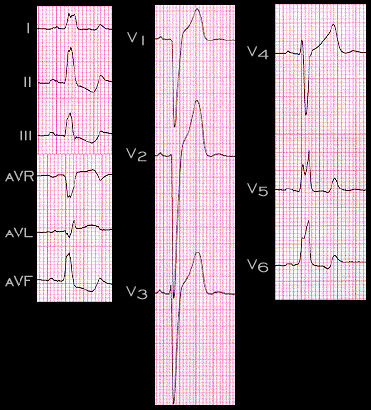
In some patients, usually those who are younger and without obvious underlying heart disease, the secondary changes in repolarization may be less pronounced. This ECG was recorded on an asymptomatic 50 year old physician with no underlying cardiovascular disease. Note that although there is ST segment depression and the T waves are abnormal, the abnormalities are less marked than on the prevous tracings.
